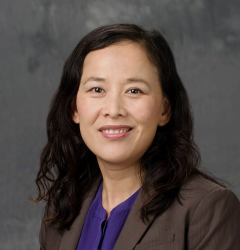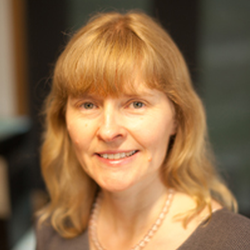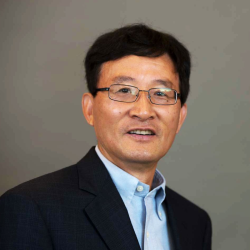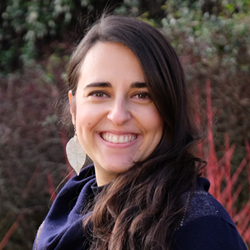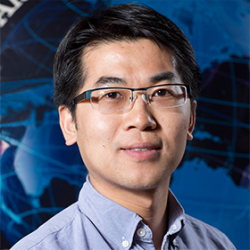Professor Haiyan Wang
Purdue University
School of Materials Engineering
School of Electrical and Computer Engineering
Professor Haiyan Wang is the Basil S. Turner Professor of Engineering with a joint appointment between the Schools of Materials Engineering and Electrical and Computer Engineering. Prof. Wang specializes in the design and processing of functional nanocomposite thin films for microelectronics, optoelectronics, high-temperature superconductors, solid oxide fuel cells, plasmonics and photonics, ferroelectric and ferromagnetic applications, and radiation tolerance materials. She has published over 460 journal articles (citation 16000 times, H-index of 59) and presented over 250 invited and contributed talks at various international conferences. Wang holds 10 patents in the areas of thin film processing and architectures and is a Fellow of ASM International, ACerS, AAAS and APS.
Wang Group Page -- Google Scholar Page
Professor Judith Driscoll
University of Cambridge
Department of Materials Science and Metallurgy
Judith Driscoll is Professor in the Materials Science at the University of Cambridge. She is also Royal Academy of Engineering Chair in Emerging Technologies in advanced memory materials. Her research work is in the area of oxide thin film engineering for low power IT and energy devices. She is interested in both understanding of basic functionalities and in engineering new interfacial-driven properties. For this purpose, with her group she designs, fabricates and analyses novel nanostructured films.
Driscoll Group Page -- Google Scholar Page
Professor Quanxi Jia
University at Buffalo - the State University of New York
Department of Materials Design and Innovation
New York State Center of Excellence in Materials Informatics
Quanxi Jia is an Empire Innovation Professor and National Grid Professor of Materials Research at the University at Buffalo (UB), the State University of New York. He is also the Scientific Director of New York State Center for Excellence in Materials Informatics. Prior to joining UB in 2016, he was the Director of the Center for Integrated Nanotechnologies, a DOE Nanoscale Science Research Center operated jointly by Los Alamos and Sandia National Laboratories. Jia’s research areas include synthesis and study of the structure-property relationships of nanostructured materials, multifunctional materials, and thin films; development of novel deposition techniques for the growth of electronic materials; as well as development and fabrication of novel solid-state microelectronic/electro-optic devices. He has authored/co-authored over 500 peer-reviewed journal articles and holds 49 U.S. patents. He is an elected Fellow of the Los Alamos National Laboratory, the Materials Research Society, the American Physical Society, the American Ceramic Society, the American Association for the Advancement of Science, the Institute of Electrical and Electronics Engineers, and the National Academy of Inventors.
Google Scholar Page -- University Page
Dr. Giuliana Di Martino
University of Cambridge
Department of Materials Science and Metallurgy
Giuliana Di Martino is a principal investigator, lecturer in Devices Materials, and Winton Advanced Research Fellow in the Department of Materials Science and Metallurgy at University of Cambridge. Her research group has focused on developing the ultra-concentration of light trapped inside plasmonic nanocavities into an innovative fast methodology for studying real-time movement of individual atoms that underpins the new generation of memory nano-devices called resistive switching memories (RRAMs).
Di Martino Group Page -- Google Scholar Page
Dr. Aiping Chen
Los Alamos National Laboratory - Center for Integrated Nanotechnologies
Scientist
Aiping is a staff member in the Center for Integrated Nanotechnologies (CINT) of Los Alamos National Laboratory. His research is about design, growth, and characterization of oxide nanocomposites, heterostructures, multilayers, superlattices, and electronic devices. He focuses on the property-structure correlation in oxide nanostructures.
Research Page -- Google Scholar Page


